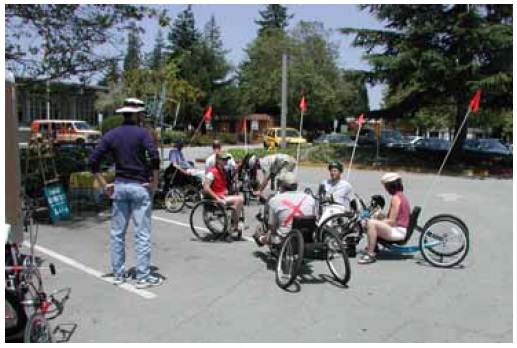Study Limitations
This study contains some limitations. First, the distribution of participants by user type as shown in the following tables may not be representative of the overall user population on the three trails, nor of shared use paths throughout the United States. For example, the observed proportion of hand cyclists (32 out of 260) is likely higher than their incidence at other times (when promoted "Ride for Science" events were not taking place) (figure 44).

Figure 44. Thirty-two hand cyclists were active participants in this study.
Second, the active participants registered with the data collection team and were aware that they were being observed. Thus, they may have been motivated to perform differently than if they had been in situ participants.
Third, measurements were taken on only individual users, not users traveling side-by-side or one in front of the other. Thus, the design implications discussed in this study pertain only to individual users. For instance, two hand cyclists traveling abreast will require more path width than a solo hand cyclist. Three inline skaters traveling one after the other may require more time to cross an intersection than a single inline skater. Moreover, individuals may behave differently when they are part of a group than when they are traveling alone.
Fourth, the sample sizes by user type varied widely. Among the 260 active users, the largest user type was bicyclists (139). At the other end, twenty-two user types had one user each. Much of the following discussion focuses on user types for which five or more users were observed in this study.

User Comments/Questions
Add Comment/Question